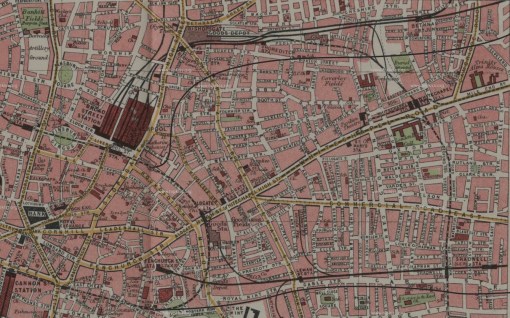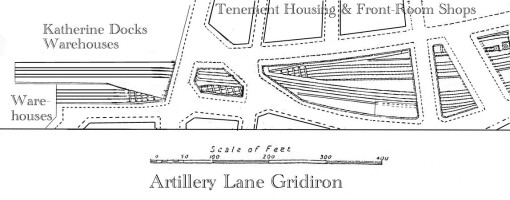February 2010
Monthly Archive
February 25, 2010
Postie arrived with a little parcel which, when unwrapped, revealed a pair of lovely resin cast GCR 3-plank open wagons to Diag.6, and they will go nicely with the handful of 3 and 5-plank opens I already have from the same source (photo from earlier delivery). These wagons were built from the mid-1890s onwards, but what is particularly useful is that they are virtually identical to the much earlier Diagram 3 and Diagram 4 wagons, so just a little tweaking here and there as earlier diagrams had iron solebar plates and different brakes…nothing too strenuous then. They will probably be given the MS&LR livery, but another nice option is to have one of the Diag.6 wagons running in the Cheshire Lines Committee colours.
The MS&LR/GCR has no running powers on Met/Widened Lines Extensions, and no access to the docks or rail-served markets, so these will simply be scattered into various trains rather than run en bloc.
February 24, 2010

I suppose I ought to prove there is some building going on, not just the collecting of kits, lounging about ‘researching’ and writing reams of waffle.
The Great Northern Railway plays an important role in the history of the Widened Lines (I’ll tackle it later), but for the purposes of this post, there was a huge amount of goods, much of it bound for Farringdon Street goods depot.
I have very little prototype info for these wagons which were apparently built in some number. The bow-ended design was typical on many pre-grouping railways in the Victorian period, though by the turn of the century had became non-standard on many, with some notable exceptions such as the LB&SCR. Nevertheless, there were still fifty-eight GNR examples in traffic at Grouping and a photo of 418614 appears in LNER livery in Tatlow Vol.1 p21. However, the later life of these wagons is unimportant here, and I’m chiefly concerned with their appearance in the 1890s.
Concerning the livery, I’m considering lettering these wagons in the pre-1898 style with the small “G Northern R” as it was at least a decade if not more before the old livery was completely eradicated, and I think it would suit the archaic design well.
I’m not sure about the complete history of the kit – Wagon & Carriage Works had them in their range until 2003 as cat. no. WW133 when they passed to Ace Kits who have not marketed them since. I recently contacted the current owner who agreed to sell me some examples if he could find enough etchings and castings from the unopened box of bits he’d acquired back in 2003.
I began this wagon in early 2008 (hence the tarnished aspect to the brass), along with a few other kits to gauge how they went together, but unrelated events caused it go back into the box of uncompleted kits, and it’s not re-emerged since. As to the build, so far so good, though the hand-drawn nature of some of the etchings is evident – more so in this close-up shot than in the flesh, and hopefully Bill Ascough will reintroduce the kit into his range soon.
February 23, 2010

Departing Moorgate Street in an easterly direction, beneath Finsbury Circus, the Extended Widened Lines descended to a level deeper than the adjacent Metropolitan line, so that at Bishopsgate, the Extended Widened Lines’ platforms were underground. After crossing Bishopsgate Street, the Extended Widened Lines swept north, passing underneath the Metropolitan line, and followed the Eastern Circle Extension which had itself branched off at Devonshire Square Junction. Civil Engineering issues prohibited the Extended Widened Lines from crossing under the Eastern Circle until the tracks had cleared the tunnels under the Katherine Docks Warehouses, which was then achieved by a gridiron flyover at Artillery Lane. Both lines then plunged into a cut and cover section to cross the area between Commercial Road and Cambridge Road which included Great Eastern Railway’s massive Spitalfields/Whitechapel coal depot and the East London Railway formation. The end of the Eastern Circle can also be seen as it follows Cable Street and Mint Street to rejoin the Metropolitan and District at Mark Lane.
February 22, 2010

Here then is the first segment of the Basilica Fields project. The lines here run in an approximately north-northeasterly direction from left to right, coming from Norton Folgate Junction at Bishopsgate (Liverpool Street), emerging in between the Katherine Docks Warehouses (some distance from Katherine Docks). The Gridiron itself, under which the Extended Widened Lines cross the the Metropolitan Lines, lies between Duke Street and Gun Street which are bisected by (from the left) Widegate Street, Artillery Lane, Union Street (later Brushfield Street) and part of Fort Street on the right.
The initial stock building program will have the Metropolitan, and Great Western Railways on the Extended Inner and Middle Circle services on the subterranean level, with the Midland and Great Northern services on the deep Extended Widened Lines below. Eventually I’ll be able to represent the services feeding in from South of the River through the New Thames Tunnel, as well as the District and LNW services from the Outer Circle.
The right hand side of the plan is open – this is where the next section will be; Sepulchre Street Goods Depot, part of the Great Eastern Railway’s huge network depots at viaduct and street level. Although on the model this follows on directly from the Artillery Lane Gridiron segment, in reality the lines will have curved towards the east, and we’ll have moved down past Bethnal Green station and Spitalfields Depot.
Eventually the backdrop will be the Great Eastern Railway’s main lines out of Liverpool Street at viaduct level.
February 19, 2010
Posted by Adrian under
Media
Leave a Comment
I had intended to get the Basilica Fields website up and running before Christmas, but events conspired against that happening. For the last year we’ve been using RapidWeaver for Buckjumper (I say we, whereas I mean my wife, who has quite an aptitude for this sort of thing), but we’ve encountered a few issues with the software, and it’s still too buggy for my liking. I had a look at SquareSpace, but concluded that it might be too limiting, so last week we bought a copy of DreamWeaver CS4, and although progress is being made, we’re still very much ascending the learning curve.
Next Page »



